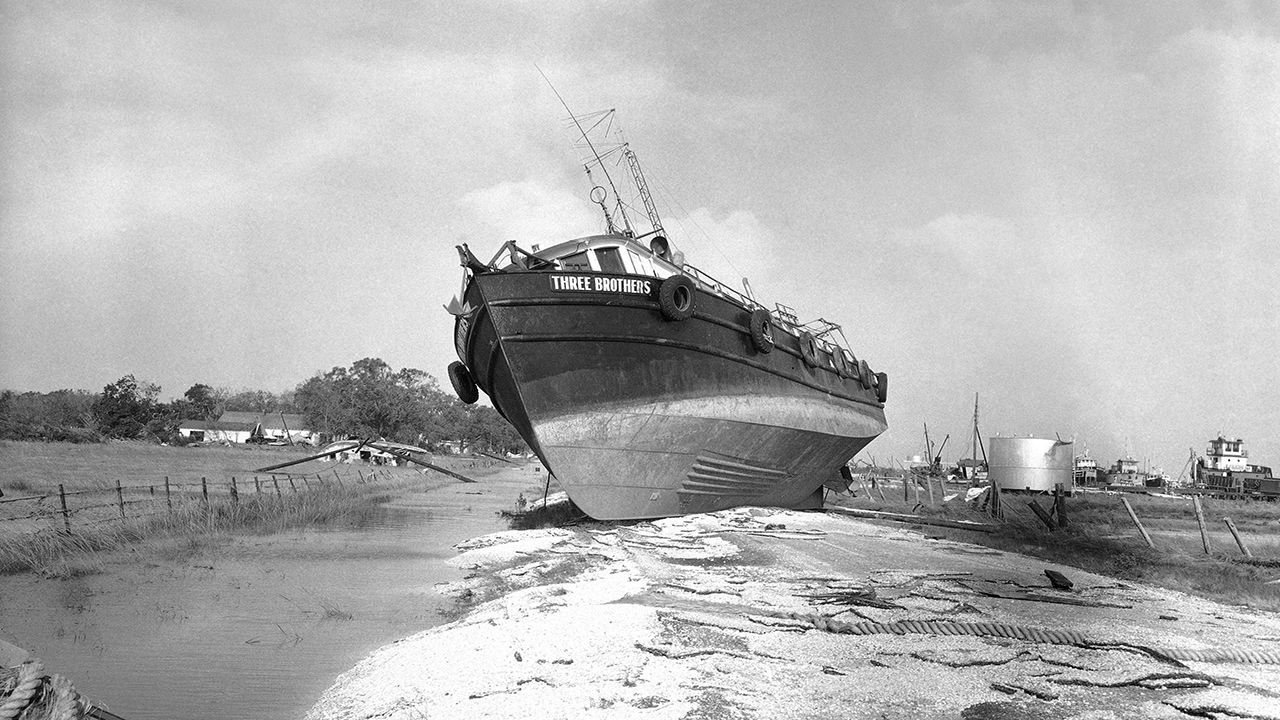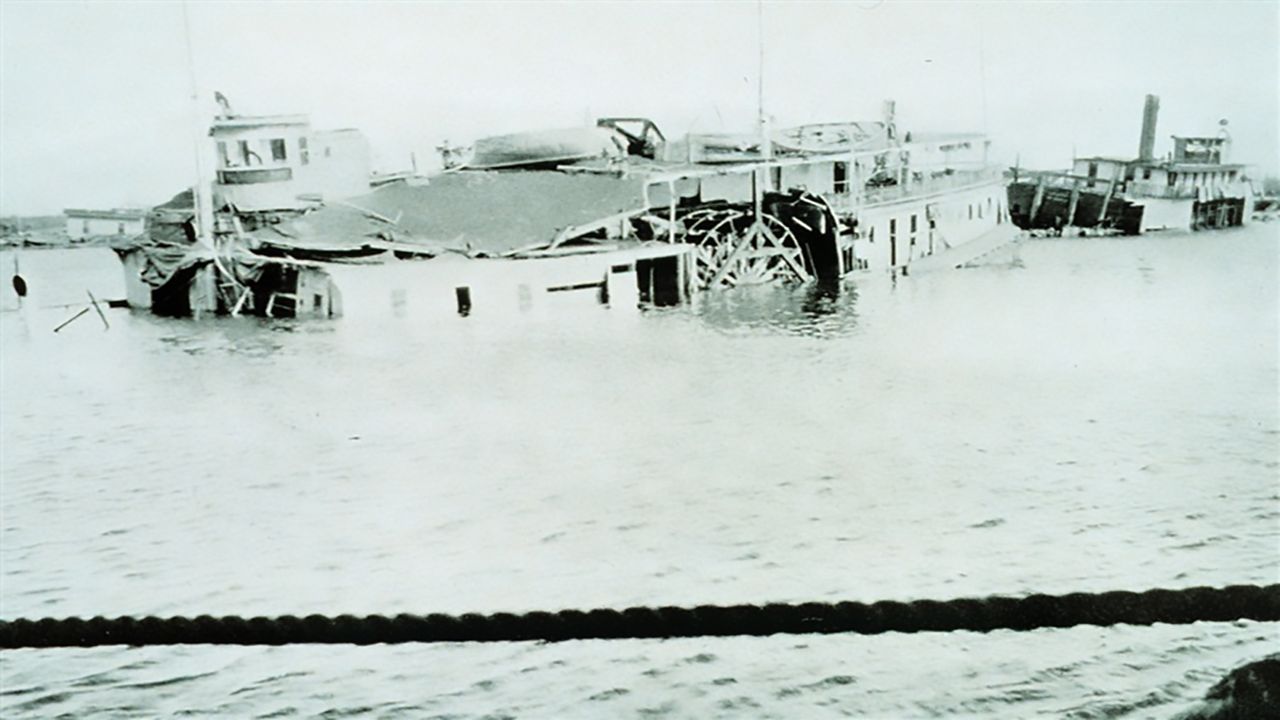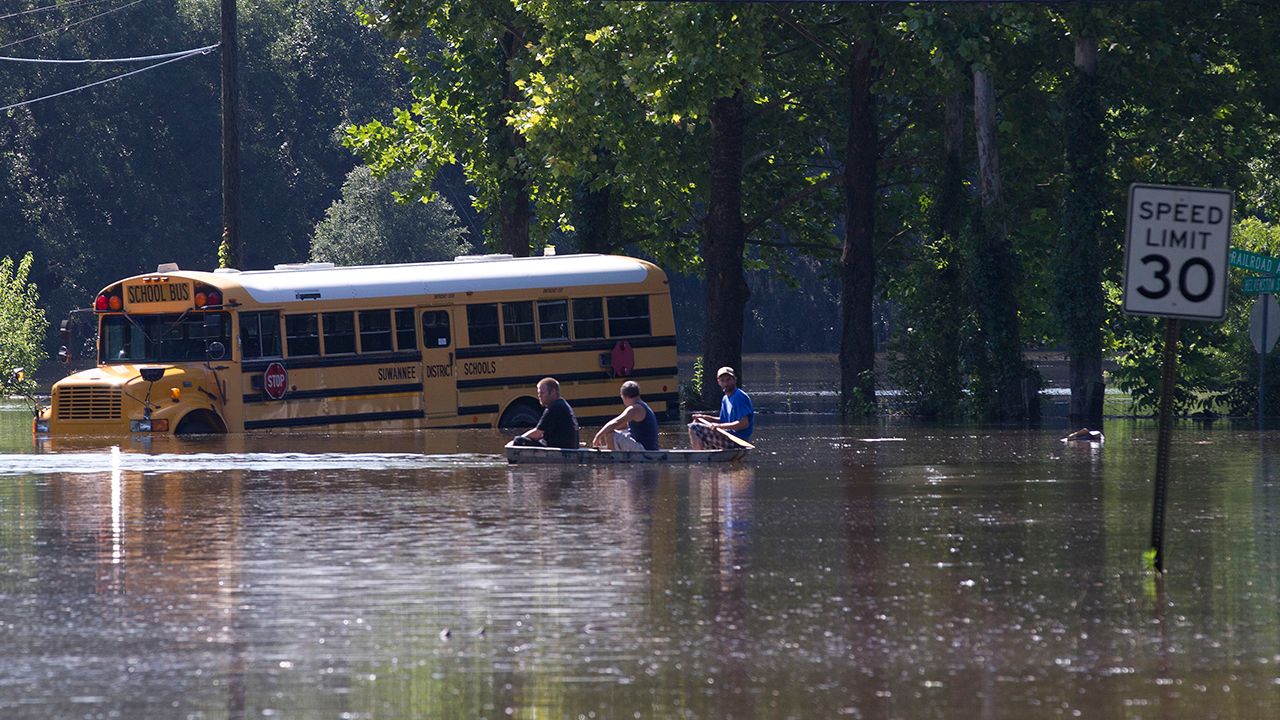It’s the first official month of hurricane season, and activity has been lower than last year.
In June, most tropical systems only form into depressions or storms because we don’t have the right ingredients for stronger storms, such as warmer ocean water.
Let’s look back at some of the top June systems.
The 2000s
Tropical Storm Debby in 2012: An area of low pressure in the Gulf developed into Tropical Storm Debby on June 23. Curving northeast, Debby eventually made landfall as a weak tropical storm near Steinhatchee, Florida.
Extreme rainfall fell over Florida, with Curtis Mill receiving the most at 28.78 inches. The Sopchoppy River reached a record-high flood stage and flooded 400 structures in Wakulla County.
River and creek flooding in Pasco and Clay Counties inundated around 700 homes. Central and South Florida saw damage from several tornadoes.
In the end, Debby caused around $210 million in losses and a total of 10 deaths.
Rainfall from Debby caused massive flooding for areas like Live Oak, Fla. in 2012. (AP Photo/Dave Martin)
Tropical Storm Allison in 2001: An interesting storm, Allison first made landfall as a tropical storm near Freeport, Texas, on June 5. It drifted northward but quickly made a U-turn and re-entered the Gulf of Mexico on June 10.
After moving back into the Gulf, Allison tracked northeastward and made a second landfall in Louisiana on June 11, and continued northeast towards the Atlantic.
Texas saw a major flood disaster when Allison stalled over the state, dumping over 35 inches of rain. Over 65,000 homes and 95,000 vehicles were damaged. Forty-one people were killed, mostly from drowning.
Allison became the costliest and second-deadliest tropical storm on record in the United States, with around $8.5 billion in damage.
The 1900s
Tropical Storm Alberto in 1994: Initially forming near the western tip of Cuba on June 30, this storm tracked north, eventually making landfall near Destin, Florida. It quickly weakened but stalled over Georgia and continued to stream in moisture across the Southeast.
This storm triggered devastating flooding across Georgia, Alabama, and Florida. Twenty-seven inches of rain fell in some locations.
Thirty-three people died from flash flooding alone, and over 18,000 homes were damaged. Alberto also affected about 900,000 acres of crops and caused 218 dams to fail.
There was a total of $1.03 billion in damage, and Alberto became one of the worst natural disasters in Georgia’s history.
Hurricane Agnes in 1972: One of the worst hurricanes in history, killing 131 people, Agnes first made landfall as a Category 1 hurricane near Panama City, Florida, on June 19. It then moved northeastward towards the Carolinas before it moved into the Atlantic and then drifted towards New York City, where it made landfall as a tropical storm on June 22.
Agnes caused a significant tornado outbreak in Florida and Georgia. There were 26 confirmed tornadoes, 24 of them in Florida. Over 2,000 structures in Florida were severely damaged or destroyed.
The rest of the Southeast felt minor impacts, but once Agnes moved into the Northeast, it devastated Pennsylvania and New York.
Pennsylvania experienced extreme flooding due to heavy rainfall. One area in Schuylkill County saw 18 inches of rain. Creeks and rivers ran out of their banks, and 220,000 people were left homeless because of the damage from the flooding.
New York suffered similar damage from flooding. Over 32,000 homes and 1,500 businesses were damaged or destroyed.

A large boat was tossed from the ocean in Cameron, La. when Hurricane Audrey ripped through in 1957. (AP Photo/Randy Taylor)
Hurricane Audrey in 1957: The first major hurricane to make our list, Audrey made landfall as a Category 3 hurricane in southwestern Louisiana on June 27. The impacts were devastating.
The storm surge inundated much of the Louisiana coast and killed much of the local wildlife. Heavy rainfall led to flooding.
In Texas, strong winds caused $8 million in damage.
The hurricane spawned many tornadoes inland, and the effects of the storm were even felt as north as Canada, killing 15 people.
It was the earliest major hurricane at the time and one of the deadliest, with over 400 people killed.
The Gulf Coast Hurricane of 1916: The second major hurricane to make the list, this system first formed into a tropical storm on June 29 in the Caribbean Sea. It moved north, and once it reached the Gulf of Mexico, warm waters allowed this system to intensify into a Category 3 hurricane.
It made landfall near Gulfport, Mississippi, on July 5, and winds caused about $3 million in damage. In Florida, it peeled roofs off houses, and chimneys and trees toppled. Heavy rainfall severely damaged crops in Florida, Alabama, Mississippi and Tennessee.
Overall, this hurricane killed 34 people. The remnants from this storm would go on to combine with another system in the Atlantic and cause massive flooding in North Carolina.

A steamer sunk in Mobile Bay, Ala. when The Gulf Coast Hurricane of 1916 tore through. (NOAA/Steve Nicklas)
The 1800s
An unnamed tropical storm in 1899: Although it is unknown when this storm first formed, weather maps indicate a tropical storm in the northwestern Gulf on June 26.
This storm made landfall on Galveston Island, Texas on June 27 and caused major devastation, mainly because many people did not have ways of receiving warnings.
This tropical storm flooded 12,000 square miles of land, and thousands of people were left homeless. It killed around 284 people.
3 back-to-back hurricanes in 1886: The end of our list takes us to 1886 when three hurricanes devastated the South and Southeast.
The first made landfall as a Category 2 hurricane near High Island, Texas on June 14. Boats, waterfront structures and a railroad were damaged. Winds tore roofs from houses, and saltwater from the ocean impacted livestock.
Areas in Louisiana even saw major crop damage and heavy rainfall, peaking at 21.4 inches.
The second hurricane made landfall near St. Marks, Florida as a Category 2 on June 21 after traveling from Cuba and the Yucatán Peninsula. The flooding happened across low-lying streets, and it pushed ships onshore. The most damage occurred near Apalachicola and Tallahassee.
The third and final hurricane of the month (and this list) also developed in the Caribbean Sea, moved northward and made landfall near the same area as the second hurricane. It made landfall as a Category 2 hurricane near Indian Pass in Florida. Homes lost their roofs, buildings collapsed and several ships sunk. It destroyed crops in Florida and Georgia, and even areas in North Carolina and Virginia saw wind and flood damage.

